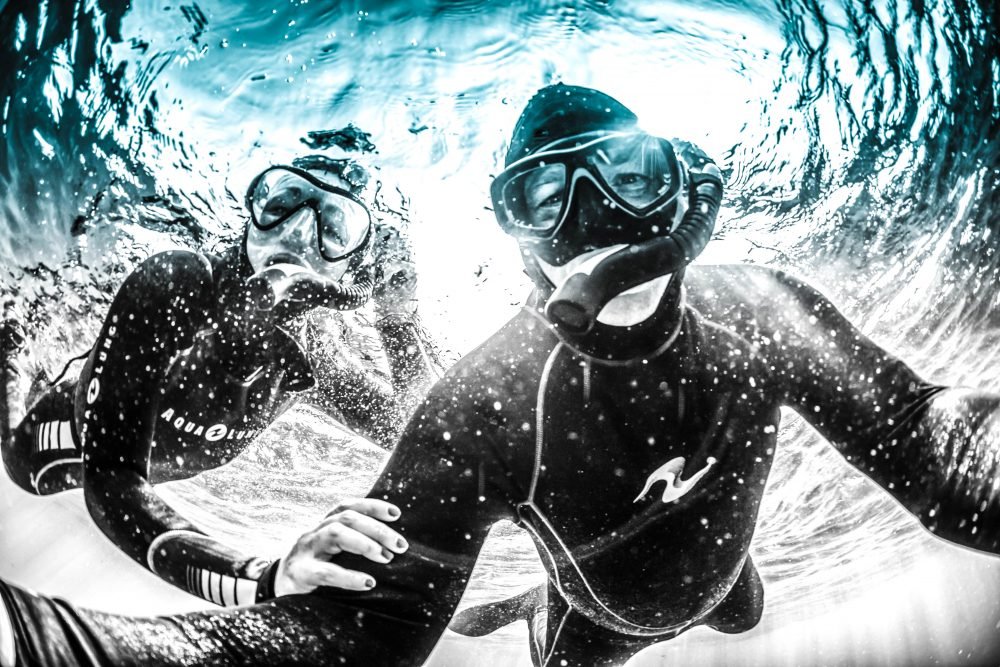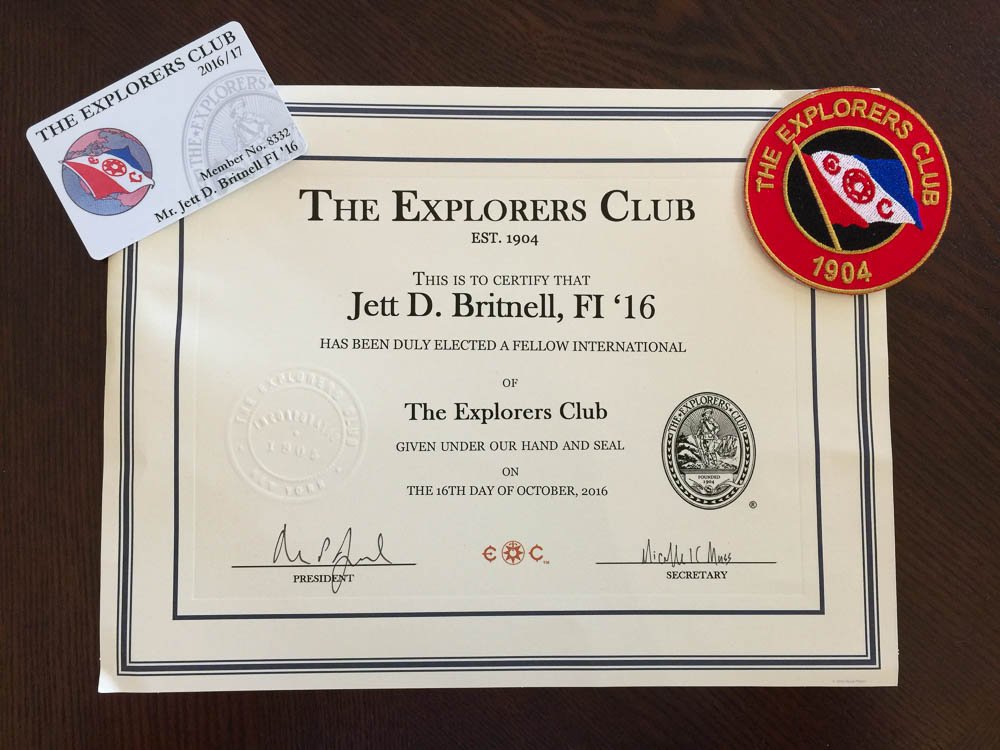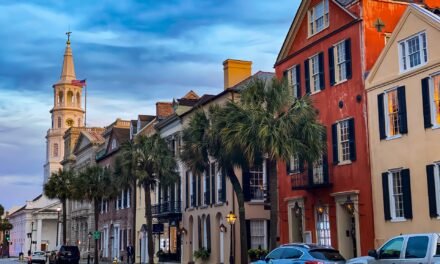
Third Age Expeditions: An Explorers Life Laid Bare

Third Age Expeditions
“We shall not cease from exploration, and the end of all our exploring will be to arrive where we started and know the place for the first time.”
~ T. S. Eliot
Welcome to my new column, Third Age Expeditions. What’s it all about you may ask? Primarily, it’s about exploratory travel adventures and doing some “off the beaten path” things you may never have thought of doing before. The Third Age marks the beginning of midlife, or what some proclaim as being the age of fulfillment. A time in one’s later years which is viewed as being an important developmental stage that can significantly add to a life well lived. A harbinger of new beginnings, as opposed to signaling an end to travel adventures.
In the coming months, I will regale you with among other things, off the chart adventures such as scuba diving with tiger sharks; snorkeling with humpback whales in Tahiti; blue cruising aboard a Gulet through Greece’s southern Dodecanese islands; experiencing the summit of a pyramid on the Mayan Riviera; enjoying breakfast in the Vatican’s beautiful Pinecone Courtyard; or walking through history at many far-flung corners of this shimmering blue planet. From time to time, I will also provide some tips and tricks on the art of photography. As in life, Third Age Expeditions is a work in progress. It’s my hope you will be intrigued by these stories. In the meantime, Luxe Beat Magazine asked me to tell you something about myself. So, sit back and relax as I wax poetic.
Here Be Dragons
“Here be dragons” popularly refers to the ominous illustrations on medieval maps that indicated dangerous uncharted areas lay beyond the edge of the map. Dragons, sea-monsters and other dangerous mythological beasts were used to imply that harm would befall anyone who dared explore previously uncharted seas. No one knows for sure where the dragon myth originated, but suffice to say, such warnings were never something I paid heed to in my youth. Deep down, I knew, life was meant to be explored.
I was five years old when I happened to watch an early 60s TV episode of a scuba diving adventure show called, Sea Hunt. I felt so inspired that I grabbed a war surplus gas mask that I had begged my dad to buy me at the local county fair, and ventured out into my backyard. Our backyard had a large iron cauldron that was filled with water and orange goldfish as a lawn feature. My gas mask had goggles and a long hose attached to a canister. Surely, it would work underwater. After putting on the gas mask I heaved myself up on the lip of the cauldron and dunked my head underwater. Not only could I clearly see the goldfish swimming, but I also noticed the flakes of rust lining the bottom of the caldron. Soon enough, water began seeping into the mask. “No worries”, I thought, “I have a breathing hose!” Of course, the gas mask flooded with water and I had to quickly abort my mission. Clearly, something was calling to me as all through my childhood I was hypnotically drawn to scuba diving either through watching TV documentaries such as The Undersea World of Jacques Cousteau or thumbing through the pages of National Geographic to follow the shark diving exploits of Australia’s famous shark divers, Ron and Valerie Taylor.
By grade five, I was obsessed with sharks, explorers and maps. Hence, studying biology, history and geography seemed embedded in my DNA. Apart from doing an interest talk presentation about sharks to my classmates many years before the blockbuster movie, JAWS, scared them out of the water, I loved to hand color maps and trace the sailing routes of early Portuguese explorers such as Vasco De Gama and Ferdinand Magellan. Classic novels such as Daniel Defoe’s Robinson Crusoe, Jack London’s Call of the Wild, Jules Verne’s 20,000 Leagues Under the Sea or Thor Heyerdahl’s’ Kon Tiki and Ra Expeditions I & II were foundational building blocks for my future explorations.
A Life in the Depths
In August 1980, I earned my scuba diving certification in British Columbia’s cold Emerald Sea. I was in my bliss. My pursuit of underwater photography soon followed, as I wanted to bring back images of the amazing things I saw underwater to show family and friends. I actually learned how to adjust camera f-stops and shutter speeds 60-feet beneath the sea. While my undersea images were good, and getting better, to get them published in a magazine, I had to write the story to go along with my photos. Remarkably, for someone without a writing degree or any formal photography training, my first published story was a multi-page double-page spread feature article in Canada’s DIVER Magazine. One of my photos also graced the magazine’s front cover in that same issue. I had arrived, so to speak. This was simply the beginning as I went on to become an internationally published diving photojournalist. During this time, my underwater exploits ran parallel to my full-time job as a Senior Account Executive in Employee Benefits for one of Canada’s largest insurance companies. Hey, the ends justified the means as this adventurer had to pay the bills.
The Holy Trifecta
“It is clear that with your background, experience, and interests, you would be an ideal candidate for Fellowship.”
~ Royal Canadian Geographical Society
John Lennon sang “Life is what happens to you while you’re busy making other plans.” Despite all my undersea adventures and topside explorations, I never dared presume I had amassed the explorer credentials required to be elected a Fellow International (FI’16) in the world renowned and exclusive Explorers Club, let alone be named a Fellow in London’s famed Royal Geographical Society, or be nominated a Fellow in the prestigious Royal Canadian Geographical Society. Collectively, fellowship in all three of these explorer societies is referred to as achieving the Holy Trifecta. All my fellowships were granted in 2016 and 2017. Yes, quite a humbling experience while at the same time filling me with a heady sense of accomplishment and a deep sense of gratitude to belong to such an illustrious fraternity of adventurers. Understandably, there is no faking it until you make it, as fellowship is the highest level of entry into these famous clubs and is not awarded without merit.
A Fraternity of Adventurers
Legendary members of the Explorers Club include Arctic explorer Robert Peary, Antarctic explorer Roald Amundsen, mountaineers Sir Edmund Hillary and Tenzing Norgay, astronauts Neil Armstrong and Buzz Aldrin, three former U.S. presidents, Kon-Tiki expedition’s Thor Heyerdahl along with modern day explorers such as marine biologist Dr. Sylvia Earle, anthropologist Jane Goodall, and film director James Cameron, to name just a few. Fellowship in the Explorers Club is reserved for those individuals who have distinguished themselves in some way by directly contributing to scientific knowledge in the field of geographical exploration or allied sciences. Such accomplishments are proven by having a deep résumé of expeditions, adventures, scholarships and/or publications documenting scientific fieldwork or explorations, but may also be documented in books, popular media, or broadcast media. Along with securing letters of support from two current club members, all new member applications are also vetted by a membership panel at the Explorers Club headquarters. In the membership committee’s own words, “Travel for tourism is enjoyed primarily for pleasure or self-education. Therefore, extensive travel photography, participation in educational tours, or similar pursuits in remote parts of the world do not alone qualify one to become an Explorers Club member.”
Fellowship in the Royal Geographical Society (RGS) is granted to those who can demonstrate evidence of their own work and academic publications in the field of geography and closely related subjects such as international development and climate change. Founded in 1830, this esteemed institute based in London has a storied history of supporting many famous British explorers and expeditions, including those of, Sir Charles Darwin, legendary African explorer Dr. David Livingstone, Sir Ernest Shackleton, Sir Robert Scott (Scott of the Antarctic), Arctic explorer Sir John Franklin, and mountaineer Sir Edmund Hillary to name a few. Among many other notable explorers and geographers, current fellows also include Michael Palin (Yes, that Michael Palin) who served as president of the RGS from 2009 to 2012. Fellows in the RGS may use the post-nominal designation FRGS after their names.
The Royal Canadian Geographical Society’s (RCGS) College of Fellows includes many of Canada’s eminent explorers, astronauts, writers, geographers, scientists, artists, anthropologists, soldiers, business leaders, historians, educators and even some former Prime Ministers. RCGS Fellows are deemed to have distinguished themselves by directly contributing to scientific knowledge in the field of geography, geographical exploration or allied sciences (i.e., archaeology, atmospheric sciences, marine biology, zoology, etc.). Such accomplishments are evidenced by published books, scientific publications or major mainstream media coverage documenting fieldwork, or exploration. In the society’s own words, “Fellowship in the College has, since its inception in 1929, represented the very best of Canada, including distinguished individuals from many different fields, united in their commitment to the Society’s mission to celebrate the country, its geography and peoples.” Fellows in the RCGS may use the post-nominal designation FRCGS after their names.
We Are All Explorers
Mount Everest conqueror Sir Edmund Hillary said, “Nobody climbs mountains for scientific reasons. Science is used to raise money for the expeditions, but you really climb for the hell of it.“ The instinct to explore does not belong solely to those who have climbed Mount Everest, dived on lost shipwrecks, discovered a new dinosaur, or to those brave astronauts who have hurtled through space in a tin can. We are all explorers who are able to know a place for the first time. To figuratively stand upon the shoulders of great explorers, one must venture outdoors and seize the opportunity to explore the world that surrounds them. In truth, that’s all I ever did. With my Third Age Expeditions column, I intend to stay the course. Come join the adventure, even if just for the hell of it.

A traditional pre-voyage prayer with crew and guests before the Polynesian canoe, Faafaite sets sale in Tahiti
Until our next dispatch, dare to Explore…Dream…Discover.
By Jett Britnell, FRCGS, FRGS, FI’16











































